I am Keith Anselmo C. Jardiniano, taking BSECE at CvSU - Indang and now (2017) a 4th year student (BSECE 4 - 2). This blog contains stuffs (learning, experiences, progress in journal, etc.) about ECEN 70: Signals, Spectra and Signal Processing, a part of my engineering college journey.
Don't wanna be here? Send us removal request.
Text
Artificial Neural Network (ANN)
Last meeting, my classmates presented journal articles about anything that include feature extraction and classification. I did not present mine because I could not find the soft copy in my phone.
Our instructor talked about Artificial Neural Network or ANN. He used that classifier in his research regarding on differentiation of coffee beans grown in the farms here in Cavite. Neural Network Toolbox supports training convolutional neural network and autoencoder deep learning algorithms for image classification, regression, and feature learning tasks.
Creating 3 different variable matrices and inserting appropriate data in each matrix is the first step. Transposing the input data on the matrices is the next thing to do. As an example, I use the data from the last major activity (morphological features of three different coffee variety).
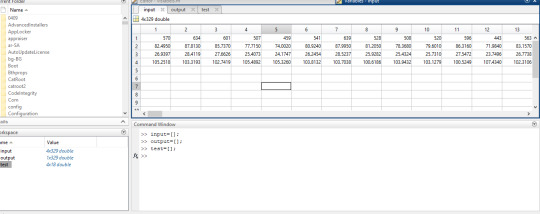
Opening the Neural Network Toolbox is the next thing to do and it could be done by typing nntool. Import the input and target data from the matrices created earlier. These are the training data. After that we create a network (Feed-forward backprop) and export it to the workspace.
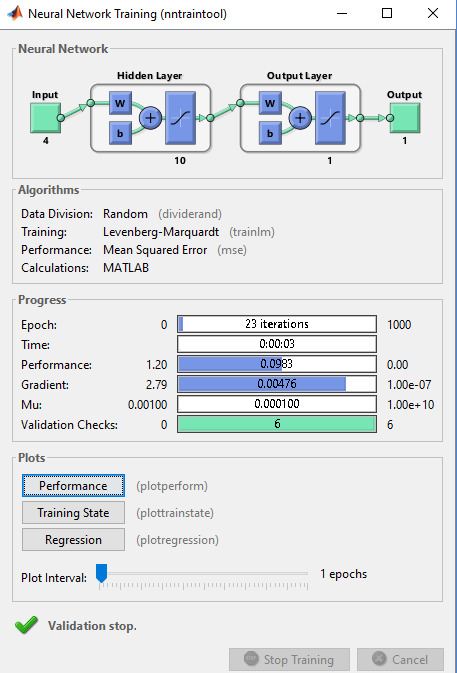

To test the classifier, I input the test data where the respond of the classifier must be all 1 (Robusta) since I input Robusta coffee bean feeatures. It is done by using x=sim(coffee,test).

0 notes
Text
October 6, 2017
Last tuesday, October 3, I managed to finish and submit our second major activity in DSP Lab. We are instructed to get the morphological features (Surface Area, Perimeter, Equivalent and Roundness) of three different varieties of coffee harvested from different places in Cavite. The MATLAB code below is used to acquire data.
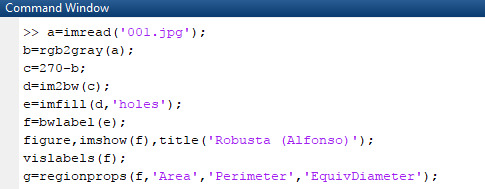
First thing to do is to put the .jpg files on the current folder. To input the coffee beans image in MATLAB, we use imread function. Before we get the values of different features of the 30 beans on an single image, the image first must be enhanced and pre-processed. The image is first turned into grayscale by uisng the rgb2gray function and then adjusting the contrast by subracting the grayscaled image to values ranging from 250-300, depending on the quality of the original image. im2bw, turns the grayscaled image to a binary image, and image are now black and white. imfill function, obviously, filled the holes that is present on an object in an image.

bwlabel function labelled the objects in the image. To see or visualize the this labels, numerical labels, we use vislabels function. It display a numerical label near a certain object in the image.
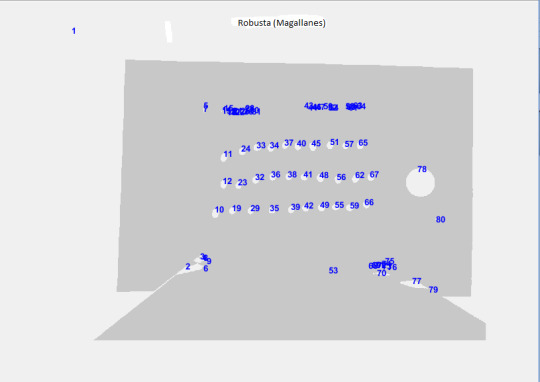
After labeling, now we could extract values from the coffee beans. regionprops function measure properties of image regions such as area, centroid, boundingbox, equivalent diameter, perimeter, etc. But we just need the values for area, perimeter and equivalent diameter so we use this code: g=regionprops(f,'Area','Perimeter','EquivDiameter'). Typing g(vislabel of the coffee bean) dispays the corresponding area, equivalent diameter and perimeter of the selected bean. To make things easy, we use xlswrite function. It writes matrix g in the Microsoft Excel spreadsheet workbook. Last thing to do is to get the value of roundess of the coffee beans, using the formula (((4*suface area*pi)/(perimeter*perimeter))*100). It could be done on MS Excel.

0 notes
Text
Major Activity 1 - Mendeley
Our first major activity in DSP Lab is to transform a thesis in the form of a journal article. After weeks of editing and revision, I managed to finish the activity. I came up on using the TELKOMNIKA (Telecommunication Computing Electronics and Control) journal article format. It is hard at first, since compressing the information in a 80-page thesis into a 10-page article. Another problem is to find related journals that we will used as the reference of the journal.
Mendeley is a desktop and web program produced by Elsevier for managing and sharing research papers, discovering research data and collaborating online. This program helps me a lot because citing statements or paragraphs is easy. Instead of manual typing the name, date, title of article/book, publisher and volume/page in the bibliography/reference section of the article, I just followed the steps that our instructor showed us in our first meeting in DSP Lab using Mendeley. TELKOMNIKA format is not that too fancy. I just follow the instructions in the template they provided, like the things to and not to include in each part (abstract, introducion, research method, discussion, conclusion) of the article. TELKOMNIKA uses Vancouver style of referencing
Our activity is to be pass on Tuesday, October 3.
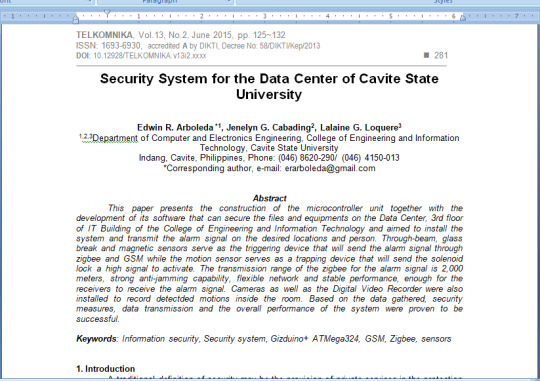
0 notes
Text
September 29, 2017 - Major Activity 2
Our instrcutor gave us our 2nd major activity about feature extraction using image processing using MATLAB. The goal is to extract the measurement of surface area, perimeter, equivalent diameter and roundness of each bean in the given images. There are three different kind of coffee beans to be tested, Robusta, Excelsa and Liberica, that came/harvested from different municipality here in Cavite.
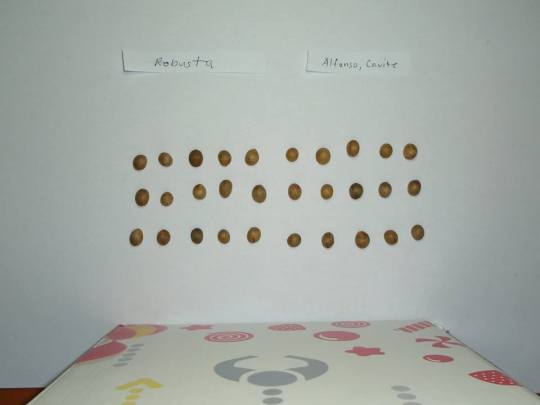
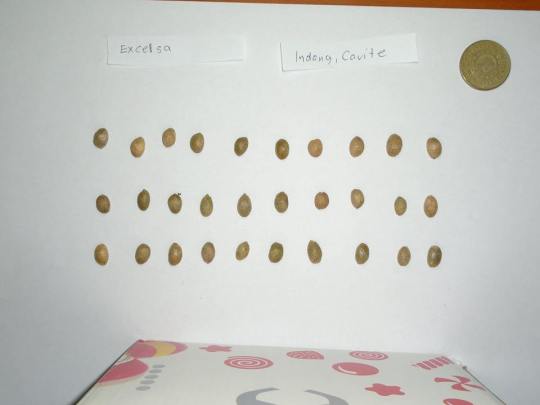

“diffent kinds of coffee beans”
0 notes
Text
September 8, 2017 - Basics image processing using MATLAB
Last tuesday (September 5) our instrcutor discussed the basics of image processing in MATLAB. This entry contains my all of my understanding that day.
The imread function reads image from graphics file in the current folder and the imshow function displays the read image file. To convert the image to grayscale, we use the rgb2gray function. im2bw function converts the image to a black and white ones and imfill(variable,’holes’) fill the holes when there is. Here’s an example:


“different image type of a lady bug”
0 notes
Text
September 2, 2017 - Operations of Discrete-time Signals
Signals can be added/subtracted and multiplied. But before performing operations, we must consider first the length of the signals that will be manipulated. The condition is that sequences must be equal in length. To achieve that, we must use the power of MATLAB’s indexing operations, by creating a M-file function. Below are the M-file codes:
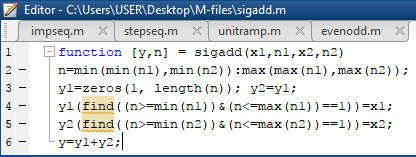
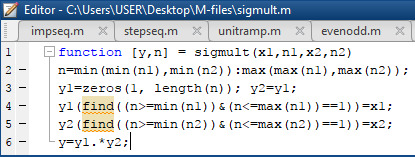
“sigadd and sigmult function”
Aside from arithmetic operations, signals can also be scaled, shifted and folded.
Time scaling operation (to be specific) has two types: down-sampling and up-sampling. Down-sampling is like zooming out a signal, and obtained by sampling it every k samples, while up-sampling is the opposite of the first, it is like zooming in and achieved by inserting k-1 number of zeros between the sampled signals.
Time shifting operation is either delaying or advancing the start of a signal. It is delayed when k is negative and advanced when k is positive, where k is the amount of shift samples.
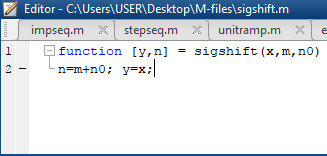
“sigshift function”
And lastly, the time reversal or reflection operation. It is the mirror image of the signal. The signal would be flipped, and sometimes flipped and shifted. The signal seems folded.

“sigfold function”
These entry contains the things that I’ve learned last August 29. Signals can be manipulated, it can be modified, based on the need and application.
0 notes
Text
August 25, 2017
Last tuesday, 22th of August, our classes was suspended due to heavy rainfall. It was really unfortunate because I arrived at school before the announcement.
I was preparing my “practice journal assignment” given by our instructor, that will be submitted next week. I got the undergraduate thesis title “DESIGN AND INSTALLATION OF THE SECURITY SYSTEM FOR THE DATA CENTER OF CAVITE STATE UNIVERSITY” by Jenelyn Cabading and Lalaine Loquere. The study aimed to design and construct the microcontroller unit together with the development of its software that can secure the files and equipments on the Data Center in the DIT building.
We’d written a journal-like article about applications of vector analysis two semester ago as a project on our subject “Vector Analysis”. We used IEEE format. Now, I don’t know what format to use in our assignment.
I’ve searched on Google: “cvsu research journal”, because I remember our instructor said it exist and described it as “dead journal”.

I just navigate to “Downloads” and check the pdf files there. I’ve scanned the maiden issue and saw articles regarding pawikan and swine flu. I can’t find the template doc file so I browse for a while until I saw from the “News” section this:
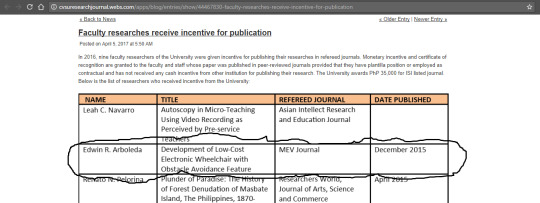
I search the title on Google and see it. I read the abstract of the research journal article and realized that the concept is innovative and helpful. This article was published on MEV Journal. Published article means “reliable and good article” and I am proud of my instructor and its co-authors (CvSU ECE student).
I must start doing my assignment and read (maybe scan) some journals and study its parts.
0 notes
Text
August 18, 2017 - Matlab vs Potato laptop
I can’t install Matlab in my laptop computer. I realized that the installer is for 64-bit OS windows. My old slow laptop (Intel Atom N455 @ 1.66 GHz, 1GB DDR3 SDRAM @ 667 MHz, Windows 7 Pro 32-bit OS) can’t handle that.
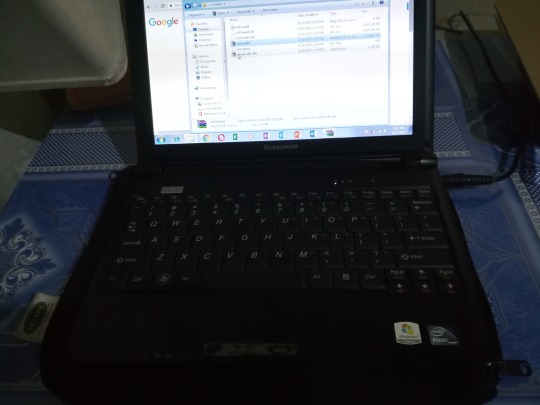
For the mean time, I will watch Matlab tutorials because my knowledge is too narrow. The installation of Matlab must be done sooner because Sir Edwin gave us assignment that is to submitted.
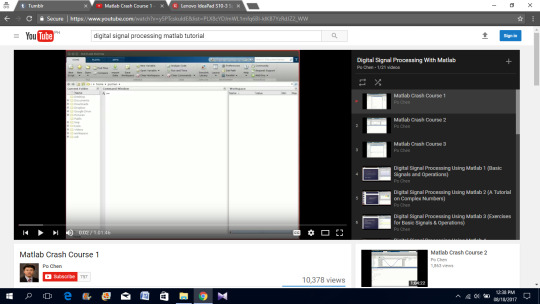
“Screenshot is taken from a different laptop.”
1 note
·
View note
Text
August 15, 2017 - 2nd Meeting: First time using Matlab
“MATLAB is a high-performance language for technical computing. It integrates computation, visualization, and programming in an easy-to-use environment where problems and solutions are expressed in familiar mathematical notation.” (Retrieved from http://cimss.ssec.wisc.edu/wxwise/class/aos340/spr00/whatismatlab.htm)
In our second meeting in ECEN 70 lab, our instructor introduced Matlab. Honestly, my impression to Matlab is scary and looks like very complicated to study. By the way, Sir Edwin discussed first the difference between continuous-time signal and discrete-time signal. He give real life picture for us to understand the concept. Since our subject is all about digital signal processing, we are more focused in discrete-time signals.
Signals are unseen in real world. Thanks to Matlab, we, ECE students, could deal with it. In Matlab, we could represent a signal, by just entering values (interval, amplitude, etc.) and using some functions like plot and stem to see graphical representations. Different types of discrete-time signals (unit sample, unit step, unit ramp, odd and even) are explained to us and our instructor gave us patterns, in M-file and in direct method, to understand each type.
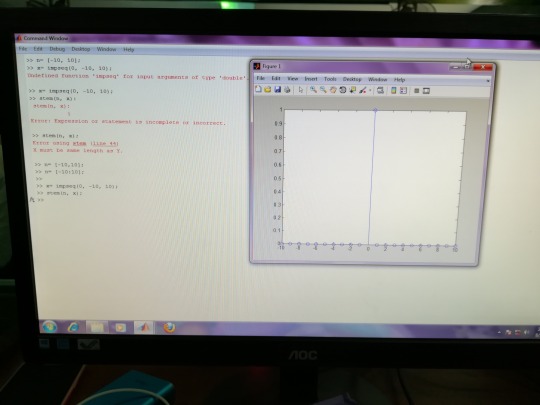
“The figure above is plotting a impulse sequence signal by using M-file method.”
1 note
·
View note
Text
August 8, 2017
Our instructor, Engr. Edwin R. Arboleda, instructed us to make our own blog about this subject. It seems to be a pain in the ass because honestly I am really bad in English, but for the sake of passing this subject, I must.
Sir Edwin discussed how to use Mendeley (desktop app), a more time-saving way to cite statements/sentences/phrases in our future jounal (a major requirement in our subject). Also, he introduced the ProQuest website (site contains archives of thesis, articles, research, journals, etc.) where we may get our references for our said project.
I am glad and the same time I am nervous this semester. ECEN 70 seems interesting yet difficult.
1 note
·
View note